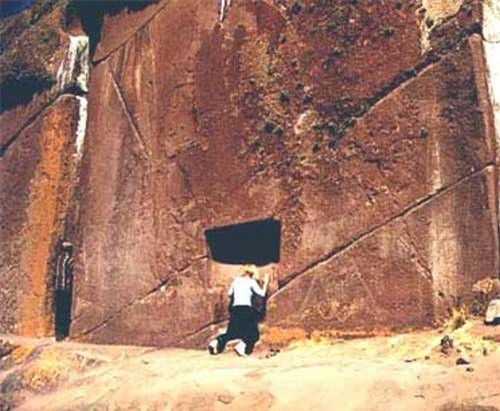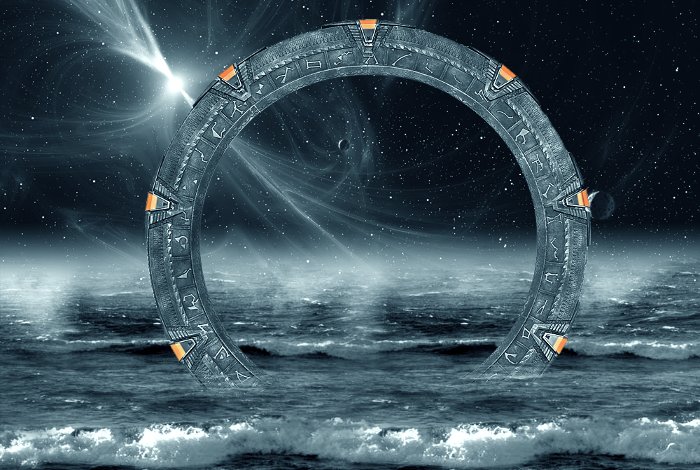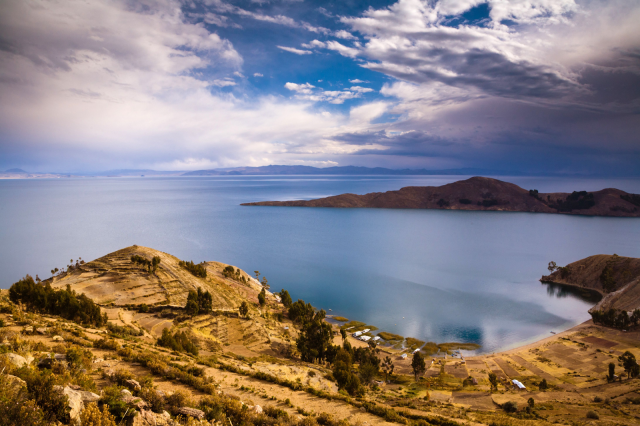¿Se ha descubierto la “Puerta de los Dioses” en la civilización Inca? Los indígenas dicen que a través de él se puede llegar a otro mundo. ¿Es este el “Stargate”, la puerta estelar de la antigüedad?
¡Bienvenidos a Misterios sin resolver!
Quienes gustan de ver películas de ciencia ficción deben estar familiarizados con el concepto de “Stargate”. Parece una entrada normal, pero después de entrar, puedes viajar a través del tiempo y el espacio, entrando a un mundo completamente diferente.
Entonces, ¿existe en nuestra Tierra una verdadera “puerta estelar”? Si es así, ¿dónde está y qué aspecto tiene? Primero retrocedamos en el tiempo hasta 1996.
La Cordillera de los Andes limita con Perú y Bolivia y el área circundante alguna vez fue el centro de la civilización Inca, una de las tres civilizaciones antiguas de América. Cerca de la Cordillera de los Andes se encuentra el lago Titicaca, el lago de agua dulce más grande de América del Sur. Es un lago sagrado para los indígenas locales y también es una de las atracciones imperdibles para todos cuando viajan a Perú.
In 1996, in the Hayu Marca mountains near Lake Titicaca in Peru, a figure was moving among the hills. His name is Jorge Luis Delgado Mamani, his job is to guide tourists. Because this is a new job, he takes advantage of his free time to go around exploring and getting acquainted with the environment.
While walking, Mamani suddenly became a little nervous, along with a little agitated. Because he discovered that even though it was his first time coming here, the scene before him seemed very familiar.
It wasn’t until he saw a door carved into a red sandstone cliff on a steep mountainside that he was finally able to determine that he had really come here, just in a dream.
Mamani believes that in her darkness she has been summoned by an invisible force. Speaking to local media, he said: “When I first saw that structure, I almost fainted…”
In an interview, he recalled, saying: “Over the past few years, I have dreamed many times that I was here building things, but in my dreams, the road leading to the gate was paved with marble. large pink, with pink marble sculptures on both sides… I had mentioned these visions to my family many times, so when I finally saw that gate, it was like revealed by God.”
Mamani’s discovery quickly caused a stir in the local area. Media, archaeologists, Inca scholars and even UFO enthusiasts flocked. What is special about this stone gate? Why is everyone so crazy about it?
Originally, the Inca culture had always passed down a legend about the “Gate of the Gods”. Local people have passed down from generation to generation that the gate was created by Gods, and that Gods descended to Earth through it. It is believed that anyone who passes through the gate will be gifted with supernatural power and knowledge. But a long, long time ago, there were great human heroes who joined the Gods, through this gate entered the land of the Gods, lived a happy and glorious life, and became immortals. death. At certain moments, these heroes return briefly with their Gods, through the portal to “patrol all the lands of the realm.”

Many people believe that the stone gate that Mamani discovered is the “Gate of the Gods”. Because some researchers believe that the history of this stone gate may be even older than the Inca civilization, and its shape fits all the descriptions related to the “Gate of the Gods”. ”.
This mysterious giant gate-shaped structure is seven meters high and wide, with a small concave gate-shaped structure in the middle of the bottom, about two meters high. It is believed that this giant gate is where Gods enter and exit, and the small gate is where human heroes enter. Furthermore, to the right of the small entrance there is a circular depression the size of a palm. Archaeologists believe that this is the keyhole that opens the legendary “Gate of the Gods”, and the key to open it. That door is a golden disc, this golden disc has a mystical name, called “the key to the Holy Land of Seven-Colored Gods”.
The legend of this golden disc began with a Spaniard named Pizarro. It was this man who put a bloody end to the fate of the Inca Empire. On August 29, 1533, Pizarro killed Atahualpa, king of the Inca Empire, in Cajamarca, Peru and ushered in the era of Spanish colonization of South America.
So how did Pizarro get to the Inca Empire?
The first half of Pizarro’s life was not as expected, his childhood was poor and he had no education. Subsequent expeditions were made in Central America but were not very successful.
In 1522, Pizarro had passed more than half of his life. He heard that the Incas in the South American continent were the land of gold, where gold, silver and treasures were everywhere, so he set out to explore. The first expedition was filled with hardships, harsh environments, disease and hunger in the South American jungle that challenged his and his crew’s confidence to continue. In the end, only 13 men joined him and reached Tumbes, the northwestern gateway to the Inca Empire. This trip, they confirmed the existence of the Inca Empire.
Ten years later, Pizarro returned to Tumbes again, and this time, he brought only 180 people with him. Using such a small number of people to deal with the giant Inca Empire was like using eggs to fight rocks. But Pizarro thought the time had come, because a tragic civil war had just broken out in the Inca Empire, millions of soldiers and civilians had been massacred, cities were razed, and several major cities were destroyed. The weight was burned to ashes. This civil war greatly weakened the power of the Inca Empire.
Pizarro organized an ambush with the men he brought and directly captured the Inca king. Pizarro then lied to the Incas that he could release their king, but after receiving a large ransom, killed the Inca king.
The Spanish ruled the Incas brutally. They destroyed a large number of Inca structures, mummies and tombs, and plundered property, causing many precious cultural relics to be destroyed. More seriously, they brought terrible diseases, such as smallpox and measles, and the Indians who had no resistance died en masse. According to historical records, within half a century after the Spanish arrived, the population of the Inca heartland fell from 700 million to less than 500,000 people.
The Spanish also killed almost all the priests. Since the priests were the only intellectual class of the Incas, this led to the loss of civilization and a large amount of historical documents about the Inca civilization.
However, legend has it that a priest named Amaru Muru escaped.
As an aristocrat and priest of the Inca Empire, Amaru Muru not only possessed profound Theological knowledge, but also had high status and power in Inca society. His mission was to sacrifice to the Gods of the Inca Empire, and through communication with the Gods, bring blessings to the Inca people.
Once working in the temple “Seven-Colored Temple”, to escape the fate of being persecuted and killed by the Spaniards, Amaru Muru escaped from the temple and hid in the Hyumalka mountains. He eventually escaped to Haryu Malka, the city of the gods, to a gate guarded by a magician. When he escaped, he brought with him the Golden Sun disc kept in the Coricancha Temple in Cusco, the disc was known as the “Key of the Seven-Colored Divine Sanctuary”. After a ritual conducted by local priests, Amaru Muru used a golden disc to open a small door in the cliff.
According to legend, the stone gate turned into a passage, and a mysterious blue light shone into the passage. Amaru Muru entered the tunnel, and the door closed. It is said that those present witnessed this miraculous scene, and the story of the mysterious tunnel and the golden disc was passed down from generation to generation. And Amaru Muru “has not been seen since.” Many people believe that Amaru Muru currently lives in the land of the Gods.
So where does the “Gate of the Gods” lead?
According to legend, the priests of the temple back then were not people from Earth, they came from another world deep in the universe, so some people speculated that they were extraterrestrial beings from here through the “Gate of the Gods”. Furthermore, in the local language there is a constellation called “Chakana”, similar to the “Southern Cross Star”, an old woman said that her ancestors said that there was a bridge connecting to their homeland there. .
Chakana, also known as the Inca cross, represents the cosmology and worldview of the Inca people, and links life, soul and spiritual wisdom, and is a totem that often appears in culture. Ancient Inca civilization.
The cosmology of the Inca civilization believed that the universe was composed of many levels, and each level was governed by different Gods. In Inca beliefs, the Sun God Inti was the patron saint and progenitor of the Inca Empire. He is considered the son of Viracocha, the Creator God, ruler of all beings and all things.
Chakana’s shape resembles a crossed cross, with four protruding squares and three steps next to it symbolizing the underworld in Inca beliefs, represented by the snake, and the intermediate world by the jaguar. The upper world is represented by vultures, the remaining corners represent love, knowledge and work.
Chakana of the Incas
In it, the upper world is also called the world of Heaven. This world includes Gods, ancestral spirits, and the stars in the sky. The Incas believed that natural phenomena such as sunlight, moonlight and rain were hidden messages given to this world by the Gods.
The intermediate world is the human world. This world is where humanity lives, including mountains, rivers, forests, steppes and other constituent things. The Incas believed that humans needed to live in harmony with nature, respect the Gods, and use that to maintain the balance of the world.
The earthly world that the snake represents is not equivalent to the hell we often think of. This world is home to the souls of the dead as well as underground resources such as minerals and water. The Incas believed that the souls of the dead would come here after leaving the human world, with the aim of undergoing a certain purification and judgement, eventually returning to the heavenly world.

The center of the Inca cross is considered the navel of the world. This circle is divided into upper and lower, black and white, symbolizing the contrasting combination of male and female, day and night, good and bad. bad, yang and yin, etc., are completely similar to the Chinese concept of Taiji.
Chakana can also be understood as “tetrahedral staircase” in the Inca language, and when we look at its shape from another angle, it resembles a pyramid viewed from above, and the four sides of It all has stairs leading to the top of the pyramid. The circle in the middle also represents the fabric of the Chakana being, telling us that all beings are interconnected, and we are one communal being. This circle contemplates the three realms of upper, middle, and lower worlds, symbolizing that our souls can transcend.
Interestingly, if Chakana were placed on a map of Peru, many important cities and sites would be discovered on the nexus of the Inca cross radiograph, it seems that the location of these places is not coincidental. course.
In addition to the Inca cross, another secret site closely related to the “Gate of the Gods” is nearby Lake Titicaca. For the Incas, Lake Titicaca was where the world arose. After death, their souls will also return to this place.
 Lake Titicaca in Peru (Internet photo)
Lake Titicaca in Peru (Internet photo)
According to Incan legend, the universe was born when Viracocha, their God of Creation, emerged from the still waters of Lake Titicaca. The Incas believed that He was the father of all other Inca Gods, He created the Earth, Heaven, Sun, Moon and all living things. After that, He traveled throughout the world, educating humanity, imparting civilization and art, then He crossed the Pacific Ocean to the West, then disappeared from everyone’s sight. But He promised to return one day.
The Incas believed that God Viracocha was still observing his creation from afar, until one day He would appear again before them through the “Gate of the Gods”.
Para los Incas, la misteriosa “Puerta de los Dioses” no sólo lleva consigo antiguas leyendas, testigos de la gloriosa civilización Inca, sino que también transmite la buena esperanza de que “los Dioses regresarán”. re”, por lo que no sorprende que la gente lo valore mucho.





